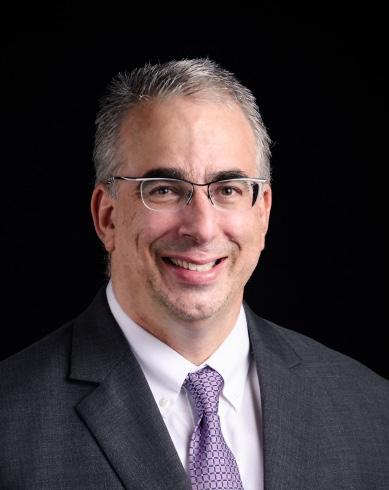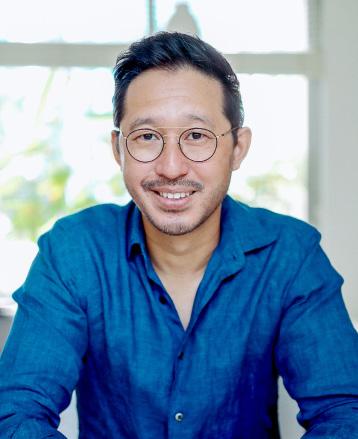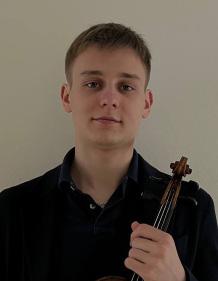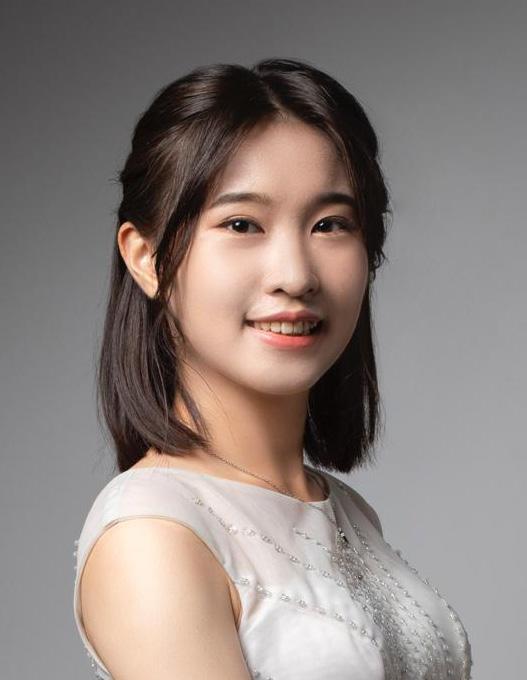
Concerto Prizewinner Showcase


Concerto Prizewinner Showcase
THURSDAY, 14 MARCH 2024, 7.30 PM
CONSERVATORY CONCERT HALL
YST Orchestral Institute with JASON LAI, principal conductor LEONID DATSIUK, violin
WANG CHIEN-JOU, piano YST COMPOSITION STUDIO
SERGEI PROKOFIEV
arr YST COMPOSITION DEPARTMENT
Visions Fugitives, Op. 22
I. Lentamente arr. CHUA ZI TAO
II. Andante arr. TAN WEI LING JODI
IV. Animato arr. NG XIN CI
VIII. Commodo arr. ALICIA DIVA CHANDRA
XV. Inquieto arr. RACHEL AOW
XVI. Dolente arr. CHEONG CHI YUN ESTENE
XIX. Presto agitatissimo arr. LIN SSU-TING
KAROL SZYMANOWSKI
Violin Concerto No. 2, Op. 61
Moderato – Allegramente – Andantino – Tempo I
– 15-minute intermission –SERGEI RACHMANINOFF
Piano Concerto No. 2 in C minor, Op. 18
I. Moderato
II. Adagio sostenuto
III. Allegro scherzando

I do not know wisdom – leave that to others –I only turn fugitive visions into verse. In each fugitive vision I see worlds, Full of the changing play of rainbows. Don’t curse me, you wise ones. What are you to me?
The fact is I’m, only a cloudlet, full of fire.
The fact is I’m only a cloudlet. Look: I’m floating. And I summon dreamers . . . You summon not.
- Konstantin Balmont (1902)Welcome, and thank you for joining us in the fifth concert of YST’s 2023-24 Orchestral Institute
Series: Fleeting Resonances showcasing the music of Sergei Prokofiev (arranged by YST Composition students!), Karol Szymanowski and Sergei Rachmaninoff. Through the three works presented tonight, each in their unique way, these composers endeavoured to capture life’s ephemerality through music—whether at career stages of adventurous beginnings (Prokofiev), precarious middles (Rachmaninoff), or triumphant capstones (Symanowski)—chasing the fugitive visions of creative output.
With Prokofiev’s collection of piano miniatures, Visions Fugitives, we present seven contrasting selections beautifully arranged and orchestrated by students from YST’s composition area. Estene Cheong describes the inspiring nature of this challenge upon hearing her Dolente movement, explaining that the “heightened emotional depth achieved through the orchestra is an avenue I eagerly anticipate exploring in my own compositions.” As you’ll hear in all seven cases, we have much to look forward to in these young composers’ future resonances.
In his fiftieth year, and in failing health, Szymanowski sought solace in the picturesque Zakopane, a mountain resort nestled at the base of the Tatra mountains. It is amidst the breathtaking
scenery and the rich tapestry of Polish highlander life that he found inspiration to compose his folkinfused final masterpiece, the impressionistically colorful Violin Concerto No. 2, interpreted beautifully by fourth-year violinist Leonid Datsiuk. As the music transports us to the vibrant landscapes and cultural traditions that inspired Szymanowski, we are reminded of the fleeting nature of artistic creation and the enduring legacy it leaves behind.
If you are of a certain age, Eric Carmen’s (who passed away this week at 74) 1975 hit “All by Myself,” propelled Rachmaninoff’s already iconic Piano Concerto No. 2, to new heights of fame and instant recognizability. Indeed, the second movement’s lyrical expression of universal longing and melancholy seems to express the ever-present vulnerability of the human condition. The outer movements and their triumphant expression of creative transcendence addresses Rachmaninoff’s own creative crisis that preceded the concerto’s composition. Under third-year pianist Wang ChienJou’s fleeting hands, accompanied by Jason Lai—and the inspired musicians of the Orchestral Institute—we are sure to be treated to a rousing conclusion!
In summing up what it means to put thankfulness
at the center of passionately fleeting resonances, Leonid puts it best when he tells us, “You need to love your instrument, the piece you play, the people around you, the place where you stay, and you need to be grateful for everything you have.”
A beautiful message for a world in the need of grace. Associate Professor Brett Stemple Vice Dean (Ensembles, Research & Professional Awareness)

Jason Lai is the Principal Conductor at the Yong Siew Toh Conservatory, Principal Guest Conductor at the Orchestra of the Swan, and former Associate Conductor of the Singapore Symphony Orchestra and Hong Kong Sinfonietta. He’s been a prominent figure in Singapore’s musical life since his arrival in 2010, but also active internationally giving masterclasses in Europe and China. He has also guest conducted the Adelaide Symphony Orchestra, New Japan Philharmonic, Podlasie Opera Philharmonic in Poland, Macao Orchestra, Hong Kong Sinfonietta, and the Osaka Symphony.
Intent on broadening the appeal of classical music to audiences who would not normally think of going into a concert hall, Jason is also building a unique reputation as a communicator with mass appeal through his television appearances in both the UK and Asia. He has frequently appeared on BBC television as a judge in both the BBC Young
Musician of the Year competition and the classical talent show “Classical Star”. He reached his widest audience when, as a conducting mentor in the series “Maestro”, his celebrity student, the popular comedienne Sue Perkins, won with a nailbiting final in front of the BBC Concert Orchestra and a live studio audience. Other BBC television appearances have include “How a Choir Works” and “The Culture Show”. Jason also starred in “Clash” for the children’s television channel, CBBC.
Since settling in Singapore he has continued with his television work. He was presenter and conductor for “Project Symphony”, an eight part series for Okto where he was filmed setting up a community orchestra. He has recently been involved in filming for a BBC series “Heart of Asia” which explores the contemporary arts and culture scene in Thailand, Indonesia, Korea and the Philippines, and a further series for BBC World called “Tales from Modern China”.
Jason’s roots lie in Hong Kong but he was born in the UK and was a pupil at the prestigious specialist music school in Manchester, Chetham’s, where he studied cello. At Oxford University he studied both cello and composition, and went on to the Guildhall School of Music and Drama in London where he was awarded a Fellowship in Conducting.
Despite having toured as a cellist with the Allegri String Quartet and having been a finalist in the BBC Young Composers Award, Jason gravitated increasingly towards conducting after he won the BBC Young Conductors Workshop in 2002. This led to his appointment as Assistant Conductor to the BBC Philharmonic with whom he made his BBC Proms debut in 2003. Following his work with various British orchestras, he was appointed Artist Associate to the Hong Kong Sinfonietta and became their Associate Conductor in 2009. Jason most recently had debuts with the Adelaide Symphony and Macau Orchestra and made return visits to conduct the Hong Kong Sinfonietta and Orchestra of the Swan.
Education is an important part of Jason’s work in Singapore. At the Yong Siew Toh Conservatory he trains the next generation of conductors, many of whom have had many successes both at home and abroad, and with the SSO he spearheaded the education and outreach programme, helping the orchestra reach new audiences notably through his Discovering Music and Children’s concerts.

Leonid Datsiuk was born in Ternopil Oblast on 25th April 2002. At the age of 5, he began learning violin from his father Oleg Datsiuk. In 2012 he started to take private lessons with honored Ukranian teacher Oleksandr Tatarinzev. From a young age, Leonid participated in the regional competitions and performed solo recitals within the region.
Leonid was awarded 2nd prize in the 2017 Lviv Virtuoso competition, 3rd prize in the 2018 ProArt competition, and the grand prize, 1st prize and special prize at the 2019 Lviv Virtuoso competition. In 2020 he was awarded 2nd prize at the EuroAsia violin competition, and in 2023 he was awarded 3rd prize at the National Piano Violin competition in Singapore.
Leonid participated in the Youth Symphony Orchestra of Ukraine’s 2019 concert season, and in 2022 he joined “LEAD! Project” in Finland. He was also invited to perform in the Lviv Mozart Festival (2019) and InStrum Fest (2020). In
2022 he participated in Keshet Eilon Summer Mastercourse.
Leonid has played in masterclasses withwellknown teachers such as Oleg Kaskiv, Yaroslava Rivniak, Olga Rivniak, Jakub Dzialak, Boris Garlitskiy, Qian Zhou, Shlomo Mintz, Olga Kaller, Mihaela Martin, Krzysztof Wegrzyn, Daniel Ching, Jonathan Ong, Koichiro Harada, Alexander Sitkovetskiy and Kevin Zhu. In 2020 he began studying with Professor Qian Zhou at the Yong Siew Toh Conservatory of Music (NUS, Singapore).
Leonid currently plays a violin by Anselmo Bellosio 1770, on generous loan from the Rin Collection.

Wang Chien-Jou was born in 2003 in Hsinchu, Taiwan, began her piano journey at the age of four. She graduated from the music program at Chien-Hwa Junior High School and the 7-year Integrated Music Program at National Tainan University of the Arts. She won first place in the Taiwan selection round of the Japanese Classical Music Competition and placed third in the national finals in Japan (the first two places were not awarded). She was invited to perform a concerto with a local orchestra in Japan. She also received the second prize in the Hsinchu City division of the national music competition.
She is skilled in improvisation and has arranged the graduation song for her junior high school and participated in its recording. She has received instruction from renowned masters both domestically and internationally, such as John Perry, Pascal Rogé, Boris Slutsky, Andreas Fröhlich, Christopher Hinterhuber, Alexander
Schimpf, Armen Babakhanian, Anna Geniushene, Yoshikazu Nagai, Marina Lomazov, Sara Tal, Victoria Mushkatkol, and Myong-Joo Lee. Currently, she is a third-year student at the Yong Siew Toh Conservatory of Music at the National University of Singapore, studying under Professor Albert Tiu.
Visions Fugitives, Op. 22
Vision Fugitives, Op. 22 is a collection of 20 miniatures composed by Sergei Prokofiev (18911953). The title, translated as 'fleeting visions,' aptly captures the essence of these musical creations as they represent spontaneous moments of inspiration that materialise through musical form. Each miniature within the collection serves as a testament to Prokofiev's artistic evolution, showcasing a notable transformation in his compositional language, marked by distinct shifts from the prevalent tonal textures in the earlier movements towards discernible elements of atonality and heightened chromaticism in the later ones. The seven movements arranged by the YST Composition Department recapture these transient musical memories, imbuing them with new life.
What emotions, themes, or messages do you aim to convey to the audience through your
interpretation? In “Lentamente,” the contrasting moods create an interesting opportunity for me to orchestrate it to bring out these qualities in the chorale-like texture. The first mood has a very light and floating texture, yet the main melody by the winds has a very singing-quality. The second mood is a much grander one, and the fullness of the texture is emphasised by the low instruments.
What specific challenges did you encounter in the orchestration process, and how did you address them? The initial feedback that I got for my first few drafts were regarding issues like staying true to the resonance and colour that Prokofiev has written for the piano, through the orchestra instruments. For example, instead of just plonking chords down for the held notes, I orchestrated the articulation and resonance in the piano pedal by using the appropriate tone and colour of the orchestra instruments.
IV. Animato arr. NG XIN CI
How did the arrangement process contribute to your personal growth as an artist? I learned about the limitations of uncommonly used instruments such as the Eb Clarinet and their effects, which
is mainly for timbral changes. With that in mind, I separated the running lines amongst the winds with a dove-tailing method, to provide depth. The process of arranging was fulfilling as I learnt new things and this opportunity adds on to my experience as a composer.
How did the arrangement process contribute to your personal growth as an artist? I learnt how to orchestrate rather than arrange, if that makes any sense. When I first saw the piano score for my movement, I initially thought I had the freedom to choose the articulation for the piece as a composer myself. But then I was taught afterwards that I should try to accurately emulate the piano performance of this movement, in the form of an orchestration. Once I understood my misconception of the situation, I think the orchestration process went a lot more smoothly.
What specific challenges did you encounter in the orchestration process, and how did you address them? “Inquieto” involves many repetitions: especially an ostinato and ascending block chord movement. Initially, I just allocated all the lowest
ranged instruments to play the ostinato, and the brasses to play the ascending block chords, which ended up sounding dull and muddy. Eventually, I varied the instruments playing the ostinato at one time, and I gave fragments of the block chord movement to the higher strings and woodwinds, to better convey the build up in dynamics and texture to the climax.
What are your thoughts on re-arranging classical music for new instrumentations, and do you envision continuing this approach in your future compositions? Rearranging the “Dolente” revealed the profound depth and colour orchestration can bring to a piece. “Dolente,” translating to “painful” in English, evokes a heart-wrenching mood through varied instrumental colours and registers. This heightened emotional depth achieved through the orchestra is an avenue I eagerly anticipate exploring in my own compositions.
What specific challenges did you encounter in the orchestration process, and how did you address them? The biggest challenge was that I needed to consider whether the instruments are playable
at such a fast tempo. Additionally, in the original piano version, the piece consists of a lot of single melodic line accompaniment with intervals; there is not a lot of variation or rich harmonies; also, the piano version contains parallel octaves throughout the piece. Therefore, it was necessary to consider how to avoid the sound that is not rich enough and overcome the imbalance among different instruments, ensuring that no instrument is overshadowed.
Violin Concerto No. 2, Op. 61
Did you know that this piece was Karol Szymanowski’s (1882–1937) last major work before his death? Composed between 1932 and 1933, Violin Concerto No. 2 was dedicated to Szymanowski’s very good friend and brilliant violinist, Paweł Kochański. Kochański had urged him to write a second violin concerto, in which both musicians collaborated on the formal layout of the piece, with Kochański providing an impeccable cadenza passage.
Unlike conventional concertos with distinct movements, Szymanowski’s second violin concerto is defined by four separate sections played without a pause, and linked by an extensive cadenza at the midpoint. The piece opens with a simple yet polished folk-like theme that unfolds in a rich musical narrative throughout the different sections. The slow and lyrical lines in the first section transform into a march-like character in the second, followed by a virtuosic cadenza passage that bridges to the third rondo-like section with a merry and bouncy theme, Kurpie melodies, and Podhale characteristics. The piece ends with a triumphant return of the opening theme.
Szymanowski’s Violin Concerto No. 2 was first performed by Kochański, with the Warsaw Philharmonic on 6th October 1933. It was Kochański’s last appearance as he passed on the next year. A very heartfelt dedication that Szymanowski wrote when publishing his work reads: “A la memoire du Grand Musicien, mon cher et inoubliable Ami, Paul Kochański [To the memory of the Great Musician, my dear and unforgettable Friend, Paweł Kochański]” This piece reminds us of the fleeting reunion between the two friends, yet an everlasting friendship that resonates deeply in the music that they had created.
What was the experience of entering the YST Concerto Competition? I learned about the Concerto Competition on my second day here at YST. From then on, my target was to win it. In my second year, I entered the competition with Tchaikovsky’s Violin Concerto, and lost. In my third year, to be honest, I prepared myself, thinking that I was probably not going to win. It would have still been a good experience. But when I won, I was like: Okay! So I’m going to play with the orchestra, nice!
I heard that this second concerto is a piece that his friend, a virtuoso violinist Paweł Kochański, kind of wrote the cadenza. Yes. After a successful first concerto, Kochański requested a second concerto. During the composition of it, Kochański helped a lot with the violin part, to make it more virtuosic. He was the first to perform it. But sadly, he passed on soon afterwards. After the death of Kochański, Syzmanowski wrote a remark in memory of his friend and great violinist. So I guess in a way, this piece holds a special memory for the both of them.
I understand this piece has a lot of different characters, what are some emotions you feel when playing it? This piece is full of folk motifs from the highlanders of Poland. My mother’s side of the family is from a part of Ukraine close to the border, where the music and tradition is similar to the Polish highlanders. At the end of cadenza, there is a moment that reminds me of a lullaby that my maternal grandmother used to sing. My grandmother is a choir conductor. I haven’t been home in four years. The nostalgia, familiarity, and belonging found in this piece makes me feel more connected to my past.
Apart from the ending part of the cadenza which you mentioned reminded you of your grandma singing the folk tunes to you, are there any other parts that you especially like? My favourite place is right before the end, where the main theme returns. In the beginning, the theme is a bit suspicious, not that clear, then later, in my opinion, that theme becomes full of love and pride. I like the way he composed it, the way he used the materials he gained through the whole concerto. The orchestration is great– there are conversations between the solo part, winds, and strings, while other instruments support the main theme, especially when the first violins play in unison with me. That’s a very powerful moment.
What advice do you have for musicians who wish to enter the Concerto Competition, or in general? Find a strong connection between the piece and something that has happened in your life, someone in your life, or yourself. Then, you will always have a direction to go for. Especially when playing a concerto, it is so important to be aware of the orchestra part, pay attention to details, and seek ideas out of it, even when playing with the piano reduction.
Where do you seek inspiration and motivation from? Love, in general! You need to love your instrument, the piece you play, the people around you, the place where you stay, and you need to be grateful for everything you have. Are there any particular times when you don’t feel that motivation? Of course, there were a lot of times when motivation disappeared. But at the end of the day, I don't really believe that humans can lose their sense of love. It’s quite difficult I think, and very sad if it happens. I have never lost that feeling. Even when I feel a little down, or when I don't have a strong connection to it, I will still try to find a way to bring it back. Because if I have motivation, I can play better, and that is basically what being a musician means. You need to play better, be better than you were yesterday. So, always seek motivation to refuel yourself.
Notes and interview by Neo Jie Ning (BMus2, MSMCP)Piano Concerto No. 2 in C minor, Op. 18
Sergei Rachmaninoff's Piano Concerto No. 2, which premiered in 1901 amidst the composer's personal struggles and self-doubt, remains an enduring gem of the Romantic era. This popular work has captivated audiences for over a century with its profound emotional resonance and dazzling virtuosity. Divided into three movements, the concerto embarks on a journey of introspection and triumph.
The opening Moderato movement introduces listeners to a world of longing and nostalgia, with sweeping melodies and captivating dialogues between the piano and orchestra. The Adagio sostenuto, perhaps the concerto's most famous section, delves into the depths of human emotion, unfolding with tender melodies that tug at the heartstrings. Rachmaninoff's mastery of composition is evident in the spellbinding interplay between piano and orchestra, culminating in a climax of breathtaking intensity before a poignant resolution. In stark contrast, the closing Allegro Scherzando bursts fourth with cheerfulness and vitality, showcasing the performer's pianistic skills with the orchestra's dynamic accompaniment. With its triumphant conclusion, Piano Concerto
No. 2 stands as a testament to Rachmaninoff's genius, transcending personal struggles to create a timeless masterpiece that continues to inspire audiences worldwide.
How did you feel when you were announced the winner of the concerto competition? It felt unreal, but I was grateful. So much had happened right before the competition. For instance, one of my biggest problems with the piece suddenly got solved during the last studio class the day before. But on the morning of the competition, the nail of my right thumb broke! The only thing I could do was to pray and to continue to have faith in God. I’m also very appreciative that YST provides students with this amazing chance because the competition really made everyone improve.
How does your chosen concerto relate to you as a person or musician? Which part resonates with you the most, and why? This concerto is one of my favourite pieces. Rachmaninoff’s use of diminished chords and the circle of fifths makes the music deeply romantic and tragic. As a person who is very sensitive to emotions, when I listen to this piece, the
beautiful melodies and harmonic colour changes always speak to my heart. I like the second subject of the first movement the most. It lets me feel that even though there are many burdens in this world, we still can soar above them, and when I play this part I’ll imagine there’s an eagle flying very freely.
Prior to this concerto, have you played any other pieces by Sergei Rachmaninoff? I have learned two preludes from Rachmaninoff– Op. 23 no. 5 in G minor and Op. 32 no. 5 in G major. I find the writing between these two preludes and Rachmaninoff’s Piano Concerto No. 2 similar, in that they all have accompaniment figurations that make the music flow effortlessly. The differences are that the concerto sounds more deep and painful, and the harmonies are more complicated than the preludes. How did you prepare for the competition? When I started to learn this concerto, I realised that it is much harder than what it sounds like. I am really grateful to have a very patient and hardworking professor, who also has a very deep understanding of the piece and has performed it many times. Through the process of practice, I also found that it is actually filling notes played by the left hand, in between the melodies, that make them so beautiful.
The challenge is to make these notes softer while still supporting the melody. I practised it slowly and without the melody first, checked that all the balance and quality were there, and then added the melody.
What advice would you give to musicians who are entering similar competitions? I would say that mental health is a very important thing during the whole process. Of course, having the technical skills and a sense of musicality are also important, but try to enjoy each moment, whether you are preparing or on the stage or after the competition. It is important to be grateful for what we have to gain from the process, regardless of the result. Even after the competition, we still need to keep improving and sharing the music with the people we love. What are some of your favourite memories associated with music? Beside playing classical music I also enjoy improvising on the piano and writing my own songs very much. I include jazz, bossa nova and k-drama elements in my improvisations. I think this is one of my favourite ways to express my feelings whether I’m in a good or bad mood. To use piano to play worship songs and to worship God is also an important part of
my life. The wonderful thing is I can get many inspirations when I’m using the piano to worship. Many of my original songs were composed during that time.
Notes and interview by
Kua
HuiMin (BMus2, MSMCP)
FIRST VIOLIN
KOMILA IZATULLOYEVA , concertmaster
CHANG CHANG-YEN
CHEN SHU-YU
FOO YUE NING
JIANG HAO
PENG YIYANG
QIU ZHENGYI
BAKHODIR RAKHIMOV
EDGAR JAVIER LUCENA RODRIGUEZ
TAN XIN JIE
XU ZHUORUI
SECOND VIOLIN
HOI KHAI-WEING, principal
GUM SENG AUNG DU VIKTORIA IVALOVA MARINOVA
SUN ZHENYAO
SYU CHENG-YI
RENEE TOH
WU TSAI-JOU
ZHAO TONGZHOU
VIOLA
PAO YU-LIN, principal
CHAN SHEE ANN SHANNON
CAITLIN CHIN KAI LI
HUANG YI
LEE WEI-FAN
LU MINA
LIU WEI-JIA
XIAO LEI
ZHENG JINGJING
CELLO
CAO HUIYING, principal
SHERZOD BAKHTIYOROV
SARAN CHAROENNIT
CHANG JIA-YUN
GUO MINGAI
LIU YOU-YU
LIU YIDUO
REN YUXIAO
SIM YEIN
WU ZUHUI
WANG JIAYE
HIBIKI OTOMO, principal
KHEE YU HANG
NG LAI TING
WANG MINGYUAN*
YUAN MOER
FLUTE
WEN TZU-LING, principal
CHEN CHIH-YING
OH SEONYOUNG
OBOE
NG WEI XIANG, principal
SONIYA RAKHMATULLINA, principal
QUEK JUN RUI
SHO YONG SHUEN
CLARINET
LEE PIN-YI, principal
DOMINIC KOH
YANG JINGLIANG
BASSOON
SHI JIAAO, principal
JAVLON KHAYITOV, principal
MUHAMMAD AFIQ BIN HUSSAINI
XU ZIXUAN
CHAI MEI QIN, principal
TSAI YI-FANG, principal
GAO XIAOXUAN
HARSHARON KAUR
LAU EN QI CHLOE
YEN SHIH-HSIN
TRUMPET
CHEN HUNG-SHUN, principal
AMIR HASIF BIN ROSLI, principal
LOI CHIANG KANG
TROMBONE
HUANG SHAO-WEI, principal
ONG AUN GUAN, principal
NG JUN JIE
TOH CHANG HUI
TUBA
LIU JUN-JIA
YANG JUNXIANG
TIMPANI
CHEN YI-CHUNG
LAI JO-WEI
CHEN YI-CHUNG, principal
LAI JO-WEI, principal
KUO YAN-SHIN
CHAYATORN SUWANPICHAISI
PIANO
EDENIA MAUREEN
For their support in the establishment of a conservatory of music in Singapore
Yong Siew Toh Endowment and Scholarship Fund
THE LATE MR RIN KIN MEI AND MRS RIN
Rin Collection String Instruments
SHAW FOUNDATION
Ones to Watch Concert Series
SINGAPORE TOTALISATOR BOARD LEE FOUNDATION
Ong Teng Cheong Professor of Music
FACULTY, STUDENTS, ALUMNI OF YST CONSERVATORY
Steven Baxter Memorial Scholarship Fund
THE COMMUNITY FOUNDATION OF SINGAPORE
S R Nathan Music Schoalrship Endowment Fund
PROF KWA CHONG GUAN AND MS KWA KIM HUA
Mabel and Soon Siew Kwa Scholarship
MDM YONG LIEW CHIN
Yong Liew Chin Music Scholarship
MR GOH GEOK KHIM
Madeline Goh Professorship in Piano
CHENTER FOUNDATION
Chenter Foundation Cathy and Tony Chen
Community Outreach Fund
KRIS FOUNDATION
Kris Foundation Viola Masterclass Fund
MDM ONG SU PIN AND MR MERVIN BENG
OKK Wind Prize
MR GEOFFREY YU
Guy Hentsch Prize for Piano Performance
MS VIVIEN GOH
Goh Soon Tioe Leadership Award
Mr Chan Wing To and Luon
Ms Chong Siak Ching and Mr Seah Cheng San
Mrs Doris Sohmen-Pao and Mr Nicholas Chan
Ms Gao Jun
Mr Geoffrey Yu
Mr Goh Geok Khim
Mr Goh Yew Lin
Mr Hamish McMillan Dyer
Mr Hsieh Fu Hua
Ms Ong Su Pin & Mr Mervin Beng
Ms Phalgun Raju & Mr Nicholas A. Nash
Mr Rin Kei Mei & Mrs Rin*
Ms Rin Huei Yen
Mr Tan Kah Tee
Ms Vivien Goh
Mr & Mrs Willy Tan Kian Ping
Mr Whang Tar Liang
Dr & Mrs Yong Pung How
BinjaiTree
CapitaLand
Chenter Foundation
The Community Foundation of Singapore
Far East Organization*
Hong Leong Foundation*
Keppel Corporation Limited
Kris Foundation
Lee Foundation*
National Arts Council
National University of Singapore Society
NUS Alumni Student Advancement Committee
OUE Foundation
Shaw Foundation
Singapore Airlines Ltd
Singapore Pools
Singapore Technologies Electronics Ltd
Singapore Technologies Engineering
Singapore Technologies Pte Ltd
Singapore Technologies Telemedia
Singapore Telecommunications Ltd
Singapore Totalisator Board
Yong Loo Lin Holdings
Anonymous donor
* Founding Partners of the Singapore International
Violin Competition
Prof Alan Bennett
Assoc Prof Brett Stemple
Assoc Prof Chan Tze Law
Ms Chan Chia Lin
Amb Chan Heng Chee
Mr Chan Yoong Han
Prof Christopher Cheng
Mr Christopher Franck
Ms Chung Wei Han
Dr Dang Vu and Ms Oanh Nguyen
Assoc Prof Eleanor Wong
Dr Geh Min
Mr Geoffrey Wong
Dr Guy Hentsch
Mr Han Oh
Assoc Prof Ho Chee Kong
Holywell Foundation Ltd
Dr James C M Khoo
Ms Jenny Ang
Asst Prof Jonathan A. Chu
Dr June Goh
Prof Karst De Jong
Ms Kathy Lai
Mr Kenneth Kwok
Mr Kok Tse Wei
Ms Kyin Nwe Moong
Ms Layla Pi and Mr Hendrick Huang
Prof Lee Eng Hin
Lien Properties Pte Ltd
Mr Lim Yan
Mr Low Jia Hua
Prof Lynette Shek
Dr Mary Ann Tsao
Ms Paige Parker and Mr Jim Rogers
Ms Pang Siu Yuin
Dr Paolo Adragna
Prof Peter Tornquist
Prof Qian Zhou
Prof Qin Li-Wei
Ms Rachel Tang
Dr Robert Teoh
Mr Robert Tomlin
Singapore Tyler Print Institute
Prof Tan Eng Chye
Mr Tan Wei Boon
Ms Xiaozhi Zhang
Mr Xinglong Huang
Yamaha Music (Asia) Pte Ltd
Ms Yolyn Ang
Ms Yvonne Tham
Assoc Prof Zhang Jin Min
Assoc Prof Zhang Manqin
Assoc Prof Zuo Jun
Mr Goh Yew Lin
Paul McNulty fortepiano
Mr Tan Kah Tee
Bösendorfer Imperial Model 290
Bösendorfer Johann Strauss
Family of the late Mr Leong Yoon Pin
Leong Yoon Pin Manuscripts
The late Mr S R Nathan
Digital Music Resources from the Madras Music Academy
Mr Nicholas Zaklama
Oboe Resources
ACKNOWLEDGEMENTS
ORCHESTRAL INSTITUTE AND ENSEMBLES
VICE DEAN OF ENSEMBLES BRETT STEMPLE
ORCHESTRA MANAGER
YAP ZIQI
TEACHING ASSISTANT WANG MINGYUAN
AUDIO AND VIDEO YST AUDIO ARTS AND SCIENCES
CREATIVE CURATION
BRETT STEMPLE
LIN XIANGNING
NEO JIE NING
CHAN XIN TONG
KUA HUI MIN
PRODUCTIONS
ALISON WONG
MIKE TAN
COMMUNICATIONS AND ENGAGEMENT
ONG SHU CHEN
MARKETING AND COMMUNICATIONS
FAEZAH ZULKIFLI
